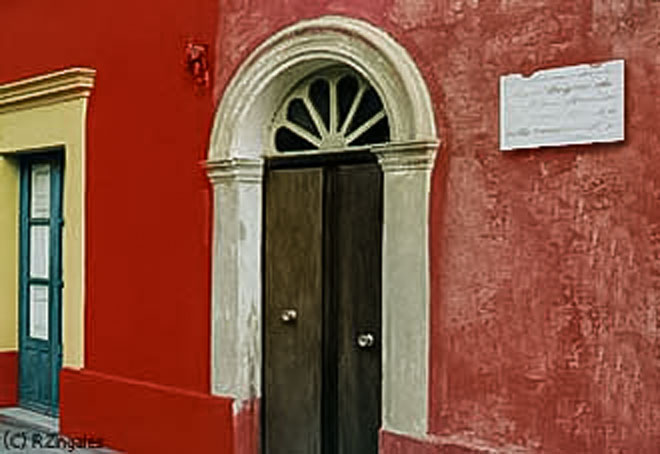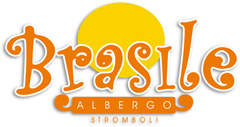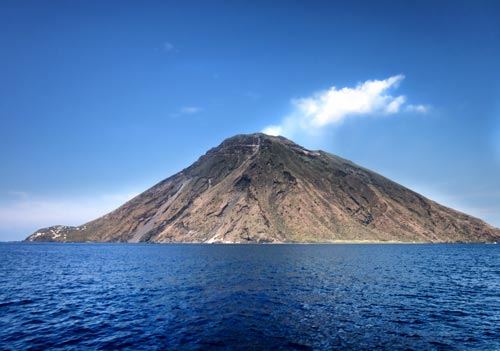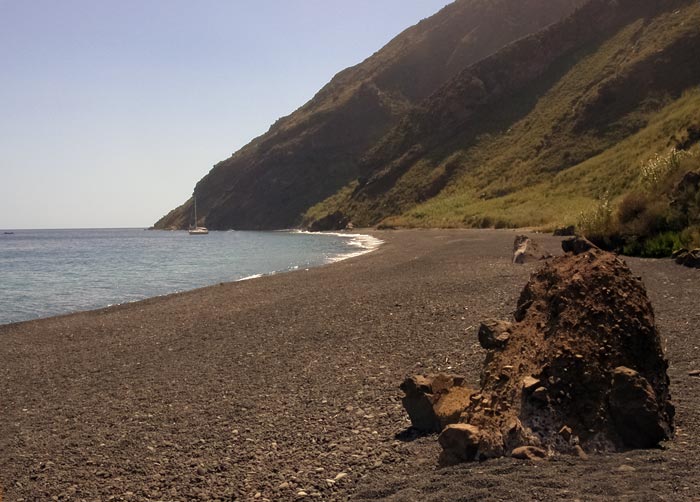Stromboli Island
The island of Stromboli, the most northern of the Eolian Island archipelago, is characterized by beautiful black volcanic sandy beaches. It is 12.6 Km², has 500 inhabitants and is only 55Km from Sicily.
The name of the island comes from the ancient name "Strongyle" ( literally "rounded" or "spinning top"). Stromboli is a wonderful and characteristic island, clearly distinguishable from the other Eolian islands : in fact, it is an active volcano always in eruption. Such a gorgeous masterpiece of nature leaves one gaping.
Water and fire meet on this island, generating unusual landscapes, surrounded by black beaches of the finest sand and millenary rocks lapped by the waves of the same cobalt blue sea, bearer of wealth and prosperity to the ancient inhabitants of the island.
L'antico borgo di Piscità visto dal mare, con la Chiesa di San Bartolo che domina l'abitato.
L'albergo Brasile si trova a due passi dal mare e vicino la chiesa.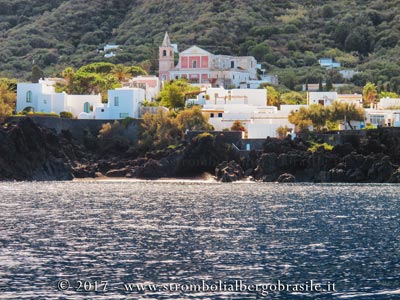
Map of Stromboli Island Landings and districts of the island.
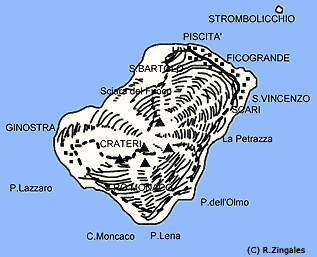
On the western side of the island, named by local inhabitants"Pertuso" ( from latin "pertugio"), there's the village of Ginostra, characterized by the old and smallest harbour in the world... since last year a new less harbour exists - not quite so small !!
The other harbour of Stromboli Island is "Scari", undoubtedly much more convenient. It's located in the village of San Vincenzo on the east side of the island.
From San Vincenzo to Piscità is a succession of extraordinary coves and beautiful black sand beaches.
.
Strombolicchio
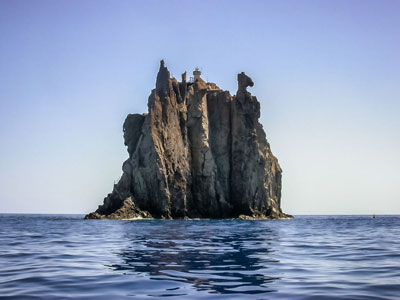
"Strombolicchio" is visible from the terrace in front of the church of San Vincenzo, a great basaltic volcanic reef rising from the sea up to 50m, at just 1 km from the beach..
There is a path from the Church of San Vincenzo, leading in about half an hour's walk (a guide is needed), to the volcanic craters. Proceeding along that path you'll get to Pizzo and then to Vancori, at 994m above sea level, where on days with a clear sky you can see the Etna Volcano in Sicily and the other Eolian islands.
Approdi e contrade
On the western side of the island, named by local inhabitants"Pertuso" ( from latin "pertugio"), there's the village of Ginostra, characterized by the old and smallest harbour in the world... since last year a new less harbour exists - not quite so small !!
The other harbour of Stromboli Island is "Scari", undoubtedly much more convenient. It's located in the village of San Vincenzo on the east side of the island.
From San Vincenzo to Piscità is a succession of extraordinary coves and beautiful black sand beaches.
Black Sand Beach in stromboli.
From Scari beach, following the narrow seaside street we reach the church of San Vincenzo, surrounded by typical Eolian style buildings, cubiform structures with rounded angles, delimitated by traditional "pisoli" and "pulere".
There is a path from the Church of San Vincenzo, leading in about half an hour's walk (a guide is needed), to the volcanic craters. Proceeding along that path you'll get to Pizzo and then to Vancori, at 994m above sea level, where on days with a clear sky you can see the Etna Volcano in Sicily and the other Eolian islands.
The guesthouse "Brasile" is located in Piscità,opposite to the San Bartolomeo Church. From here the path leading to the Punta La Bronzo observatory starts. If you climb up to 400mt you can observe the "Sciara del Fuoco". Every 15/20 minutes volcanic ashes and lapils are thrown up into the sky from the volcano, and then fall down into the sciara del fuoco. This is the perfect place to take astonishing pictures of a real live volcano! Just take with you a small tripod and put the camera in long time exposure program!!
Stromboli, a fascinating volcano
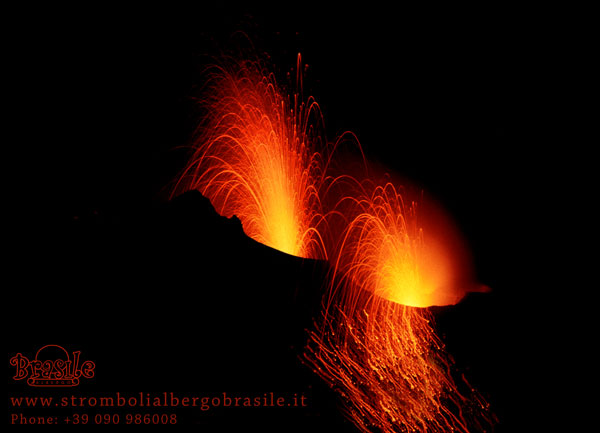
The Stromboli Volcano, born 100.000 years ago, 926 meters above sea level and 2400 meters above the sea floor, is known worldwide for its unending explosive activity which gave it the name of "tirrenian lighthouse"..
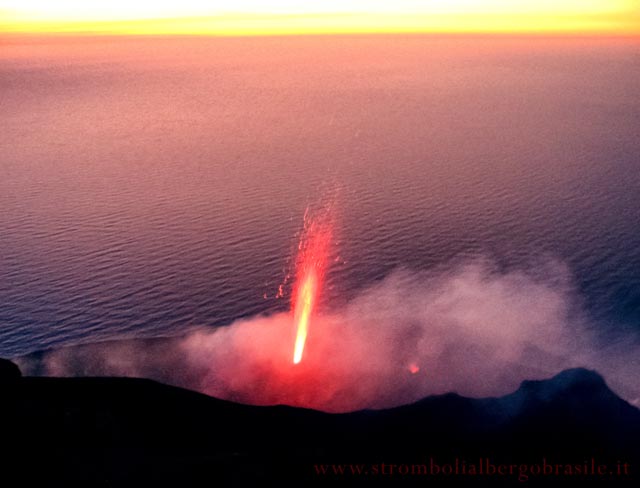
Every 15/20 minutes volcanic ashes and lapils are thrown up into the sky from the volcano, and then fall down into the sciara del fuoco. This is the perfect place to take astonishing pictures of a real live volcano! Just take with you a small tripod and put the camera in long time exposure program!
Webcams on the volcano
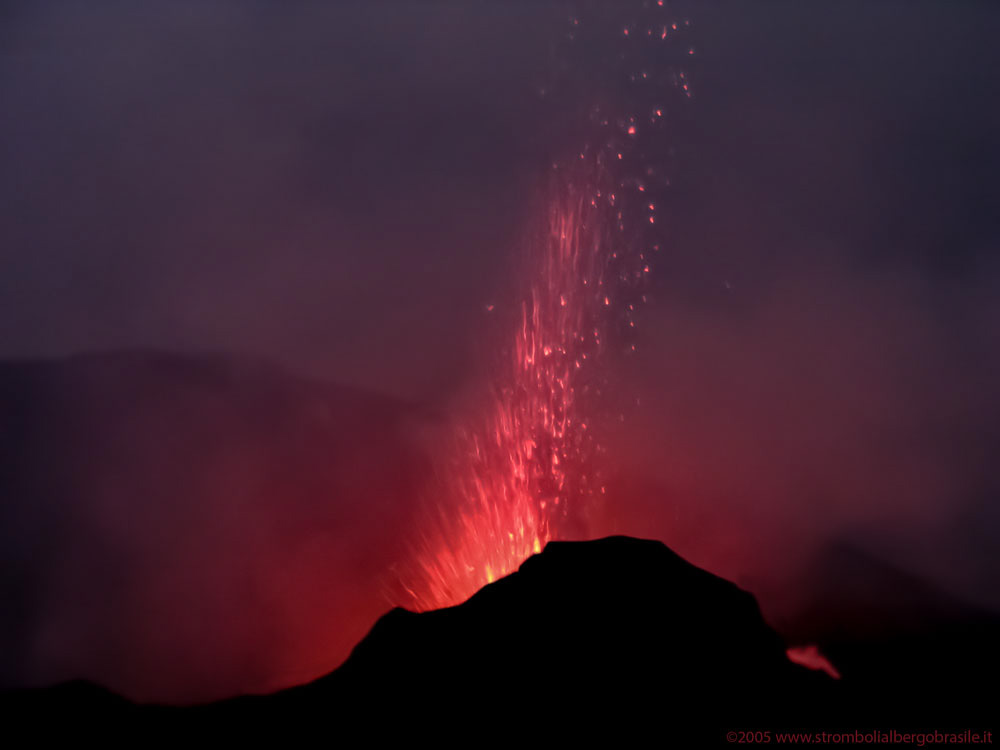
On the web there are few webcams pointed at the stromboli volcano.
Here's a link to a real time webcam placed on Stromboli by the scientists of the Istituto Nazionale di Geofisica Vulcanologia of Catania (short: INGV ):
http://www.ct.ingv.it/stromboli/main.htm (thanks Lucia Pruiti for giving us permission to link. At the local Office of INGV you can have detailed information about the eruptions of the volcano. 090/986708).
The summit of Stromboli, Serra Vancori, is what remains of an ancient volcanic crater made of andesitic lava. The actual crater lies about 200 meters downward, therefore an authorized guide it is required to take you here. The guides are always well-informed about the explosive activity trends of the volcano and can assure you a safe excursion. Their cost is about 22€ per person. with group discounts.
Stromboli Eruptions
The island can be divided into four distinct morphological units : the old serra varcori stratovolcano on the south, then some hundred meters to the north the "pizzo" ( also known as "a fossa"), while 300m below, in direction south west there are 5 active eruptive vents. The last unit is made of the "neck" of "strombolicchio", an adventive volcanic cone.
Stromboli is situated on the edge of two tectonic plates which are the origin of its perpetual activity.
Another ideal place to observe the show of the Stromboli volcano is "Punta Labronzo", at 10 minutes walk from the "Albergo Brasile".
The guesthouse "Brasile" is located in Piscità,opposite to the San Bartolomeo Church. From here the path leading to the Punta La Bronzo observatory starts. If you climb up to 400mt you can observe the "Sciara del Fuoco".
You could also rent a boat and see the "sciara del fuoco" from the sea ( just below the explosive craters) and watch the natural fireworks of the Volcano and, if you are lucky, watch the lava river diving into the sea under the starry night. The stars visible from the Eolian islands are millions more than you have ever seen in your life, due to the extremely clear sky and the lack of public illumination. Trust me!
One of the most interesting web sites regarding the island of Stromboli is the following :: http://www.swisseduc.ch/stromboli/index-it.html.
Troverete informazioni dettagliate sulla geomorfologia dell'isola, tante bellissime foto e panorami a 360° (da vedere!), ed inoltre la salita virtuale sul vulcano.. foto per foto. Troverete notizie aggiornate sulle eruzioni in corso e sulle precedenti! A prima vista sembrerebbe un sito per vulcanologi... ma credete.. c'e' passione in chi lo mantiene, e le foto lo testimoniano! Imperdibile !
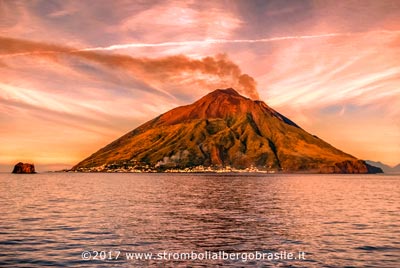
History of Stromboli
L'isola di Stromboli era anticamente una colonia agricola di Lipari, che la abitavano soltanto nel periodo della semina e del raccolto.
Nel sedicesimo secolo a.C. si stabilì un primo nucleo permanente di abitanti, proprio vicino l'attuale Chiesa di San Vincenzo.
In seguito l'isola guadagnò rilevanza come tappa obbligata per i navigatori che attraversavano il Tirreno.
In seguito l'introduzione delle navi a vapore, che non necessitavano di scali frequenti, e la concomitante costruzione della strada ferrata tra Reggio Calabria e Napoli resero l'isola assai meno frequentata, con notevoli ripercussioni sull'economia degli abitanti.
All'inizio del 900 gli abitanti di Stromboli erano circa 5000... mentre oggi sono circa 500.
Il fenomeno dell'emigrazione che colpì tutto l'arcipelago delle Eolie non risparmio l'isola, dalla quale emigrarono quasi tutti verso l'Australia e l'America.
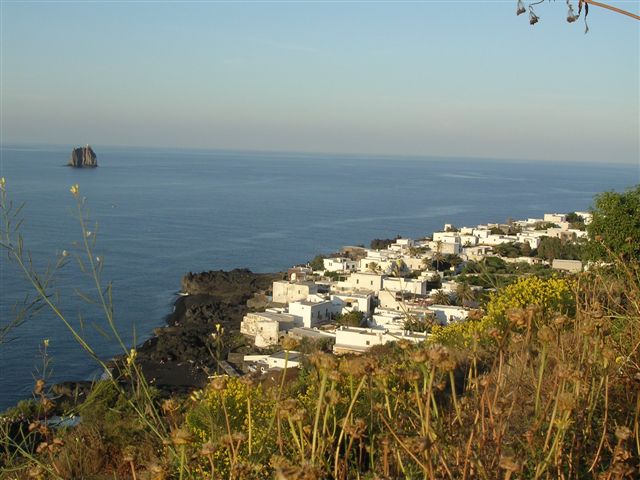
The sea of Stromboli
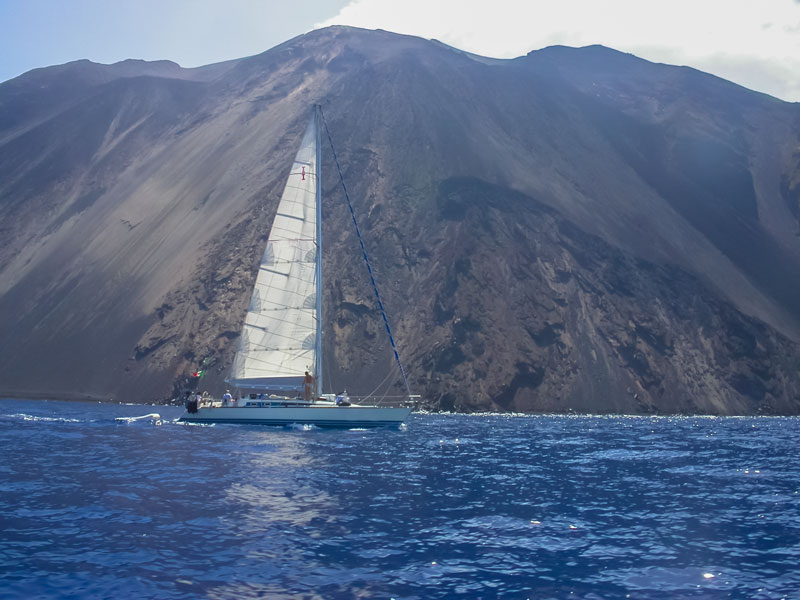
under the seaThe cobalt blue sea, characterized by gorgeous rocky floors, loved by scuba divers surrounds the whole island ... so don't forget your diving equipment or at least a mask and a snorkel!
Roberto Rossellini House
In 1949 Roberto Rossellini filmed the homonymous movie "Stromboli" with Ingrid Bergmann. The two fell in love and lived in a house on the island for a while. A plaque was posed on the wall of the red house to recall their love to the passer-by. You can see it in Via Vittorio Emanuele.
